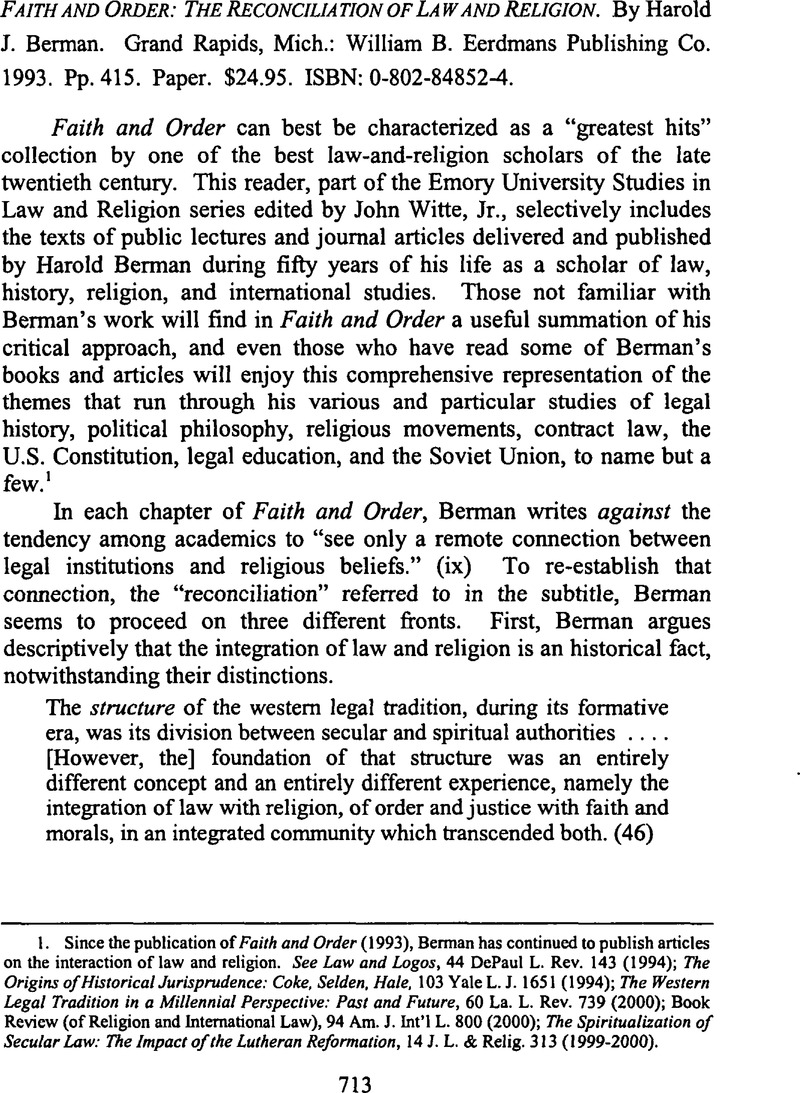No CrossRef data available.
Article contents
Faith and Order: The Reconciliation of Law and Religion. By Harold J. Berman. Grand Rapids, Mich.: William B. Eerdmans Publishing Co.1993. Pp. 415. Paper. $24.95. ISBN: 0-802-84852-4.
Published online by Cambridge University Press: 24 April 2015
Abstract

- Type
- Review Essays and Reviews
- Information
- Copyright
- Copyright © Center for the Study of Law and Religion at Emory University 2000
References
1. Since the publication of Faith and Order (1993), Berman has continued to publish articles on the interaction of law and religion. See Law and Logos, 44 DePaul L. Rev. 143 (1994)Google Scholar; The Origins of Historical Jurisprudence: Coke, Seiden. Hale. 103 Yale L. J. 1651 (1994)CrossRefGoogle Scholar; The Western Legal Tradition in a Millennial Perspective: Past and Future, 60 La. L. Rev. 739 (2000)Google Scholar; Book Review (of Religion and International Law), 94 Am. J. Int'l L. 800 (2000)CrossRefGoogle Scholar; The Spiritualization of Secular Law: The Impact of the Lutheran Reformation, 14 J. L. & Relig. 313 (1999–2000)CrossRefGoogle Scholar.
2. “Six great revolutions have punctuated the organic development of Western legal institutions: the Papal Revolution of 1075-1122; the … Lutheran Reformation in Germany—of 1517-1555; the English Revolution of 1640-1689; the American Revolution … the French Revolution … and the Russian Revolution ….” (28)
3. See Bush Unveils “Faith-Based” Initiative, The Wash. Post, Jan. 30, 2001, at A-l (President Bush “launched a broad governmental effort … to invigorate religious charities … in the battle against the nation's social problems”).




